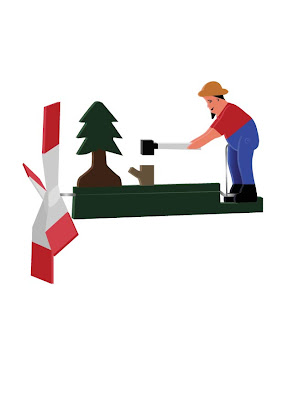 This project is currently a working interface of a ‘virtual telerobot’ - virtual in the sense that the robot exists only on screen, and not in the physical environment. I have named the project Telepresent Element - its aim is to create a context whereby the viewer experiences an aspect of a particular remote environment through the images displayed on a screen. Telepresent Element measures the outdoor wind speed and relays the information to a central computer. Software running on the machine interprets this information and uses it to control the speed of a digital, animatronic whirligig. The whirligig, as an iconic garden ornament, was chosen for this project not only for its beautifully coloured and slightly comedic kinematic potential, but also to highlight their role in the development in some forms of kinetic art and wind-powered sculpture.
This project is currently a working interface of a ‘virtual telerobot’ - virtual in the sense that the robot exists only on screen, and not in the physical environment. I have named the project Telepresent Element - its aim is to create a context whereby the viewer experiences an aspect of a particular remote environment through the images displayed on a screen. Telepresent Element measures the outdoor wind speed and relays the information to a central computer. Software running on the machine interprets this information and uses it to control the speed of a digital, animatronic whirligig. The whirligig, as an iconic garden ornament, was chosen for this project not only for its beautifully coloured and slightly comedic kinematic potential, but also to highlight their role in the development in some forms of kinetic art and wind-powered sculpture.Exactly where whirligigs originated isn’t clear, although some weathervanes date back to 1600 BC, with the first known visual representation of a European whirligig being illustrated in a medieval tapestry that depicts children playing with a whirligig consisting of a hobbyhorse on one end of a stick and a four blade propeller at the other end 19. By the 1900’s the construction of whirligigs had become an art form and what had begun as the simple turning of propellers in the wind had progressed into fully realised kinetic sculptures that produce motion and sound.
Telepresent Element makes a connection between scientific instruments (motion sensors and accelerometers etc), natural forces (such as the wind), and contemporary art. The characterisation of the whirligig on screen acts as a metaphor for a door or bridge between two separate locations. It is more concerned with the notion of perception and simulations of telepresence rather than scientific investigation - the scientific apparatus used in collecting the data is in this case applied as a means of understanding the multiplex of emotions of being simultaneously present and absent.
